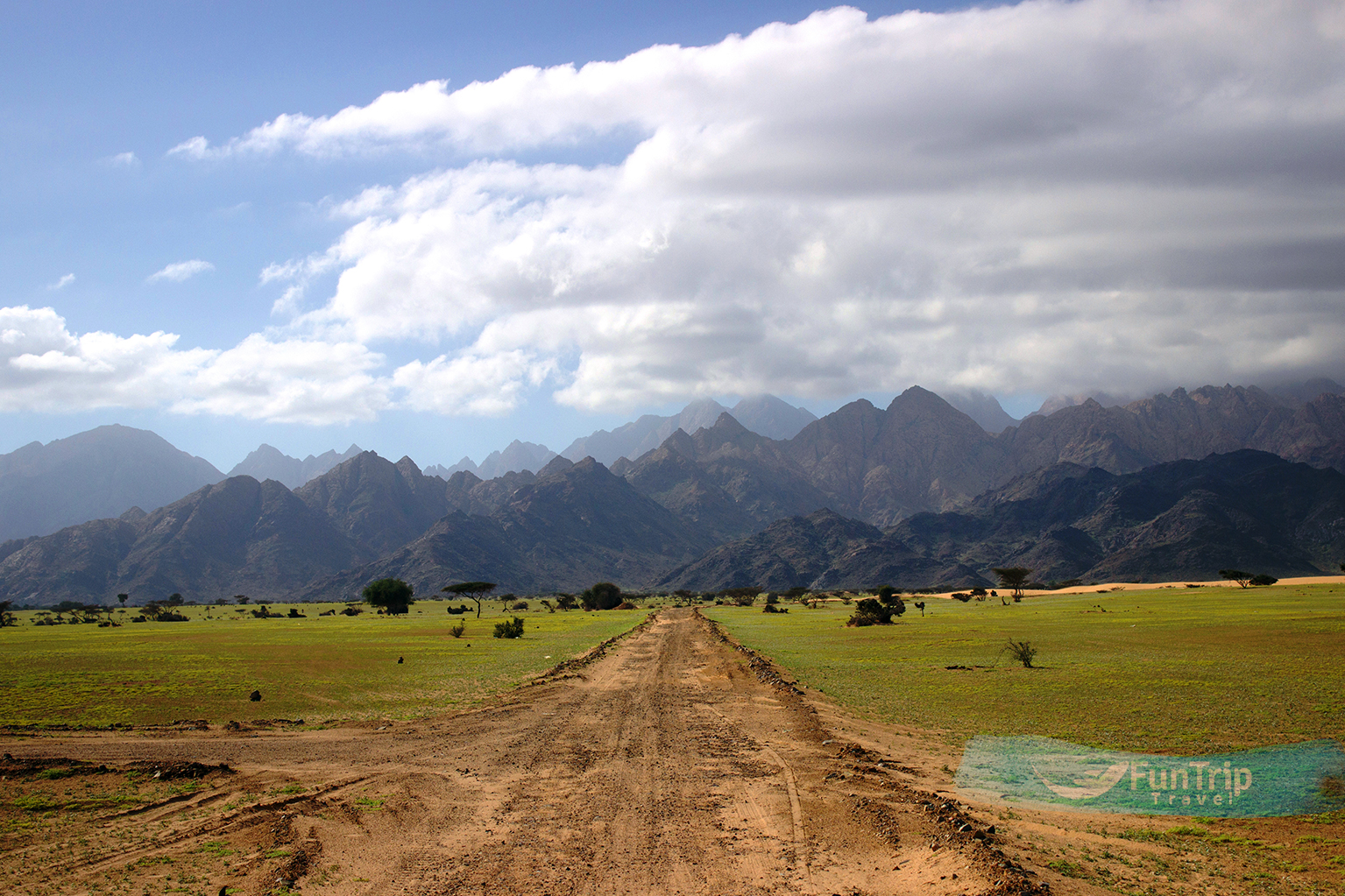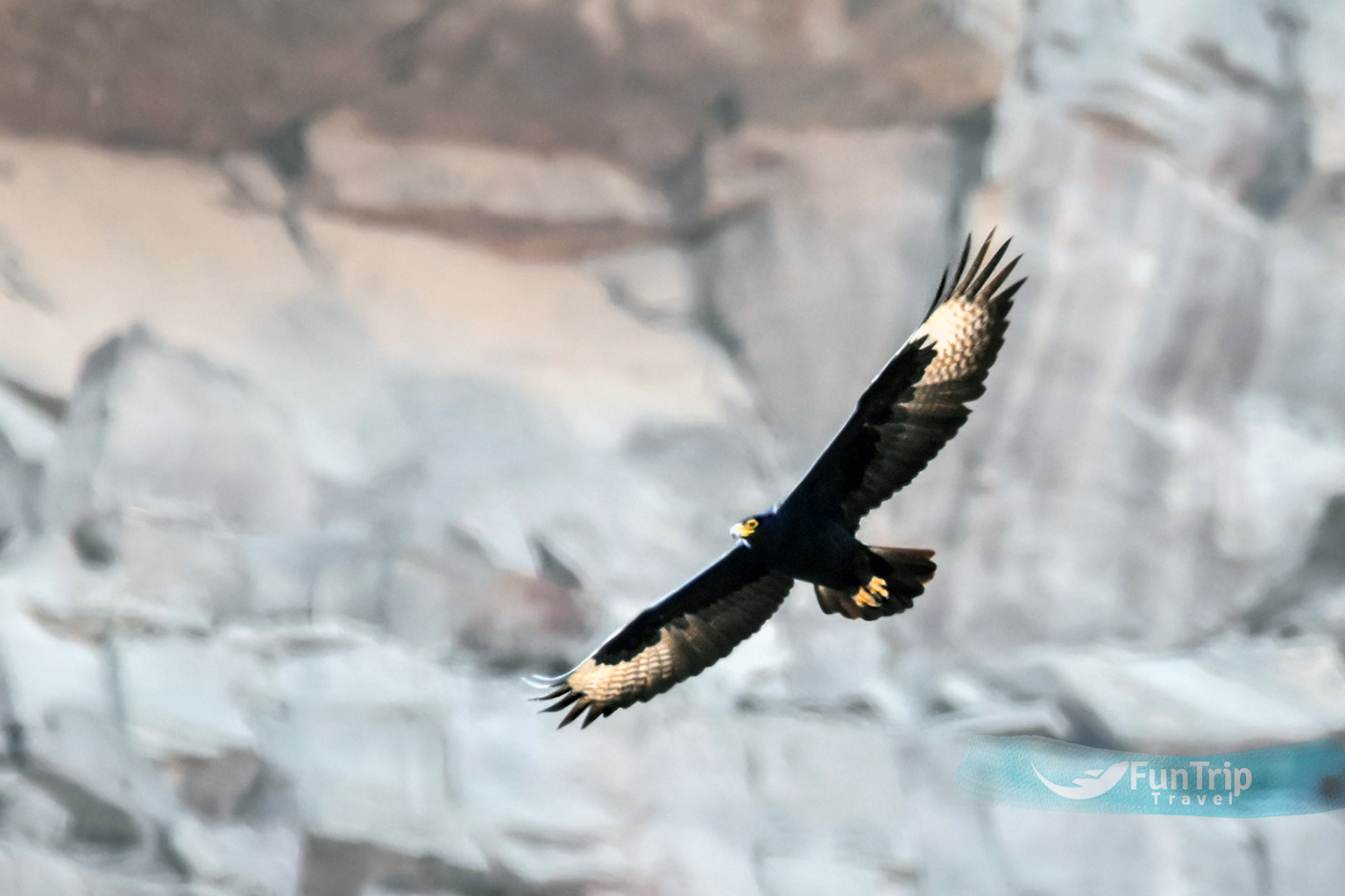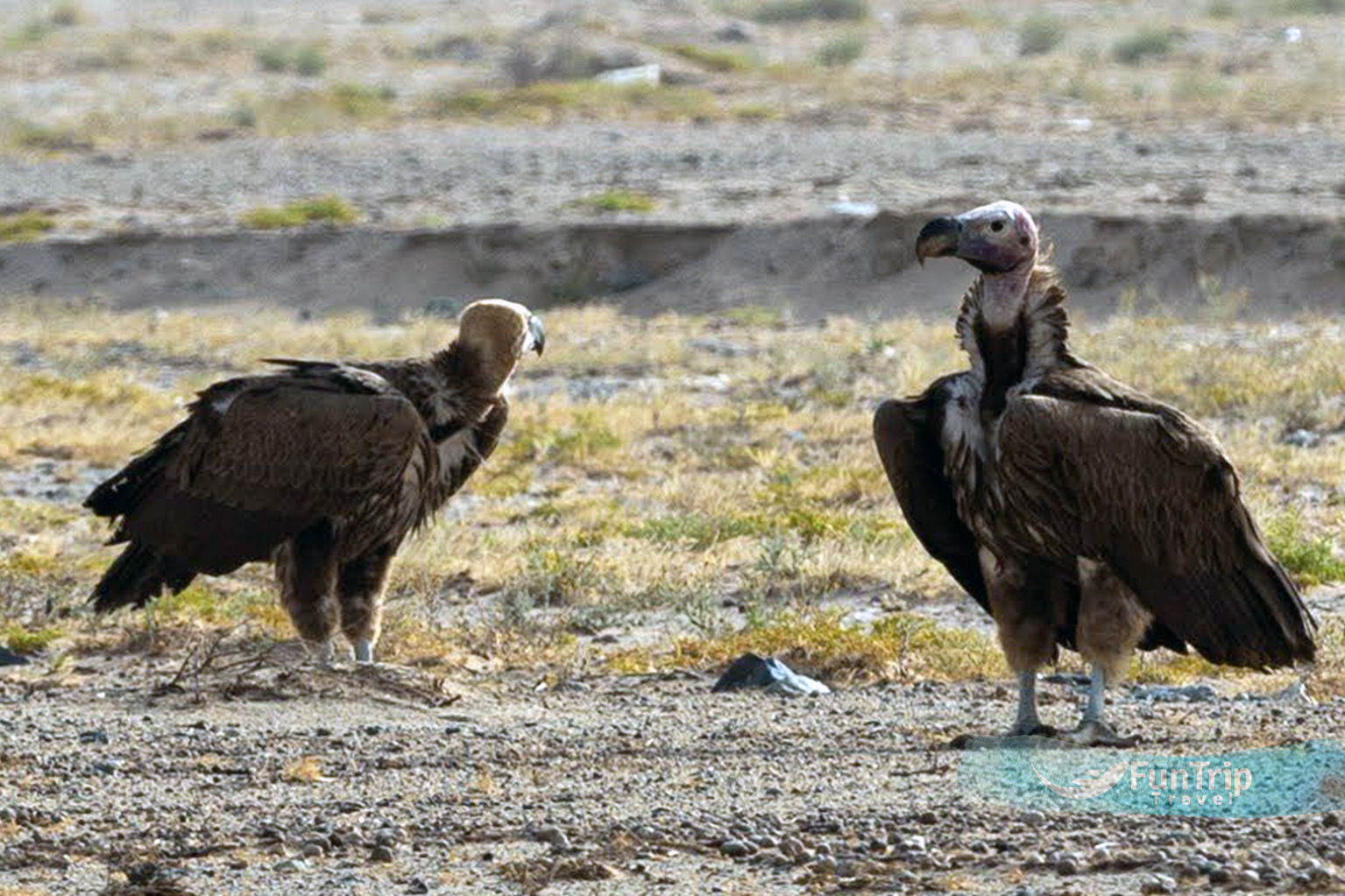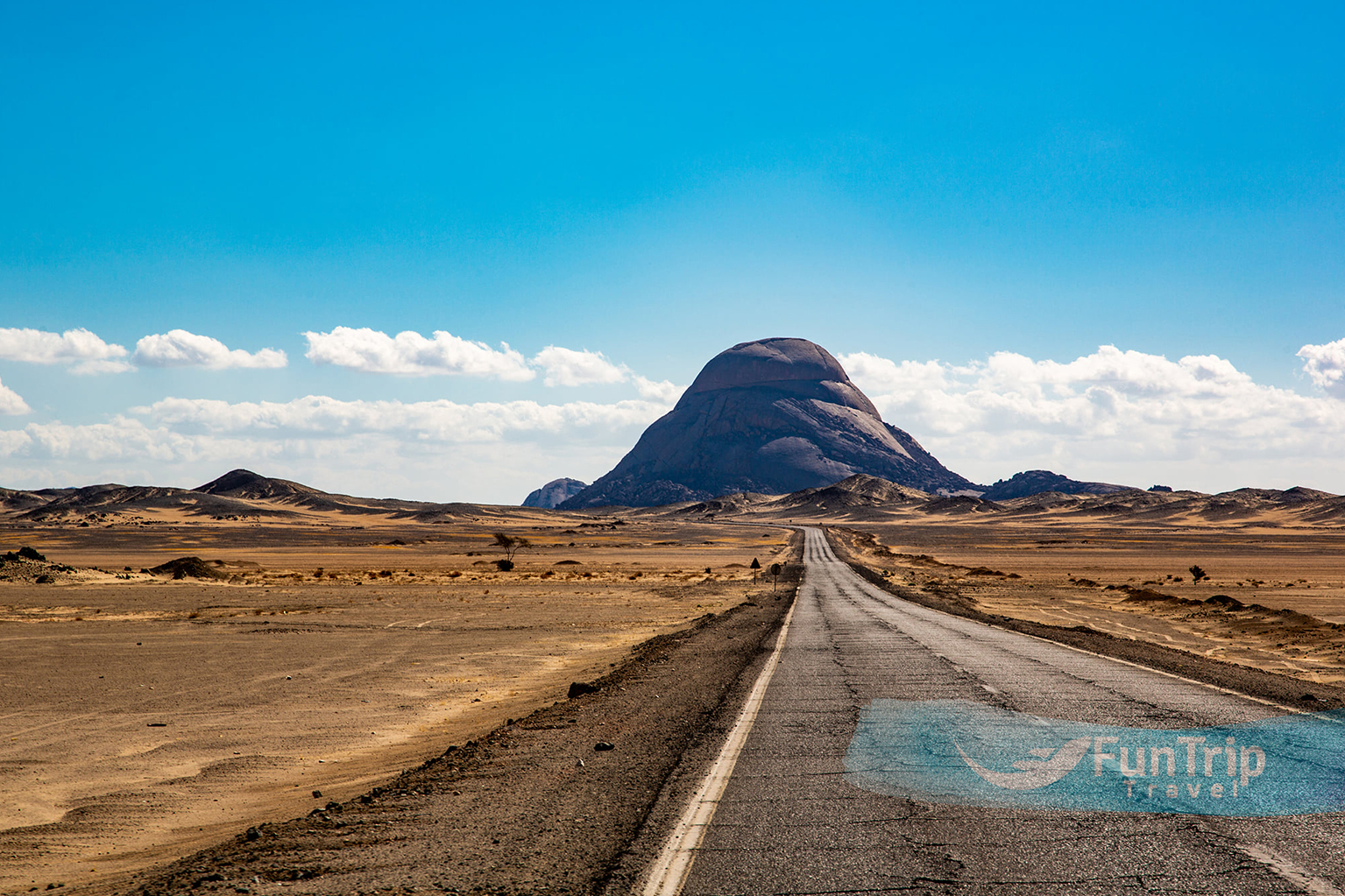Gebel Elba, meaning “Mount Elba”
The Halaib Triangle includes the mountain, which reaches a height of 1,435 metres, and the adjacent national park. Sudan and Egypt dispute the land, however it is currently controlled by the Egyptian government.
The national park is 250 km south of Marsa Alam, and the main coastal road runs through it. However, obtaining permission to visit is difficult, and even if granted, a police officer may accompany you on your journey. This is owing to the close proximity of the Sudanese border, as well as concerns over tourism’s influence on the fragile ecosystem. As a result, Gebel Elba is one of the least explored locations in the country, which is a huge advantage for anyone who receives the proper papers because it offers an environment and species diversity that is unrivalled anyplace else in Egypt. Most people who make it there have a beautiful memory that will last a lifetime.
The park encompasses a vast stretch of coral reef and mangrove coastline, 22 Red Sea islands, a 20-kilometer-wide desert coastal plain, and a mountain range whose main peaks include Gebel Elba, Gebel Shellal (waterfall mountain) at 1,409 metres, Gebel Shendodai at 1,526 metres, and Gebel Shendib at 1,911 metres. Gebel Elba is nearest to the sea, while the other peaks are farther south and inland, near the Sudanese border.
This place is special because, while being in the Saharan region, it receives abnormally significant rainfall. This is due to a combination of prevailing north-east rain-bearing winds, a curve in the shoreline that allows the coast to align itself across the direction of these wind currents, and the mountain range, which encourages the moist clouds to rise. This leads to cooling, condensation, and finally precipitation.
Only a small portion of this precipitation falls in the form of heavy rain. Mist clouds create what has been dubbed a mist oasis around Mount Elba and, to a lesser extent, the other peaks. As the humidity in these clouds rises to 100 percent, the tiny water droplets combine into larger ones, resulting in a light drizzle.
Furthermore, as the surface temperature of the rocks and other exposed surfaces cools overnight, much of the remaining water vapour in the air condenses into droplets in the form of dew.
Mount Elba can receive up to 400 mm of precipitation each year. That is greater than Greece’s annual average. And it’s significantly greater than the Eastern Desert region’s average of 15 mm.
The area’s very high precipitation levels, along with the lower temperatures of the higher elevations, support an unusually diverse range of animals. The park has recorded 458 plant species, forty bird species, thirty reptile species, and twenty-three animal species.
The area hosts an extremely wide assortment of vegetation. Much of the shoreline is surrounded by mangrove swamps and salt marshes, with the exception of the occasional acacia tree and Balanites Aegyptiaca.
Wadi El Gemal section contains some information about mangrove and acacia trees, but the Balanite aegyptiaca is an equally fascinating species that is well-adapted to desert life.
They can reach a height of 10 metres and have long, dark green spines that sprout leaves at the base. The tree is extremely resistant to camel grazing, animal activity, drought, and flooding, and its bitter but edible fruit appears even when there is little or no rainfall. Parts of the tree have apparently been used medicinally and as animal feed, though it is unclear whether this is done locally.
As the altitude rises inland, the diversity of vegetation increases to its peak in the mid-altitude zones between 500 and 1000 metres, particularly in the northern and north-eastern sections of Gebel Elba, which face the sea. The northern slopes are distinguished by two wadis (or valleys): Wadi Yahameib and Wadi Adeib, where the flora is so dense that a search of Google Earth satellite photographs (seen at the bottom of this page) reveals that Wadi Adeib alone may contain ten thousand or more trees. It’s a virtual woodland, unlike anything else in Egypt’s Eastern Desert.
At this elevation, there are still many acacias, but they are joined by big, 5-meter-high delonix-flowering trees, which have a dense canopy of colourful fern-like foliage. In some parts of the world, it is grown for ornamental purposes, and its (typically) crimson blossoms have earned it the moniker “flame tree.”
Higher up, nearer the summit, you should be able to see the unusual-looking maringa (or ben) tree. Much of it is edible, and the leaves are high in protein, vitamins A, B, and C, as well as other minerals and nutrients.
The tree grows quickly and can withstand droughts. Furthermore, the numerous tiny leaves it produces can aid in the fight against hunger and have been utilised in traditional remedies around the world to combat sickness.There’s more.

EXPLORE. CONNECT. CREATE MEMORIES
Birds of Prey in the Gebel Elba National Park
The Gebel Elba National Park is home to four species that are now uncommon in other parts of Egypt. This includes:
* Gypaetus barbatus, or bearded vulture. They have a feathered head, distinguishing them from bald old-world vultures, and a diamond-shaped tail, which is rare for a bird of prey. Unlike other vultures, they are known to occasionally attack large live animals, such as wounded goats, but appear to favour bone marrow over meat.
* The Egyptian vulture, often known as Pharaoh’s Chicken. They consume carrion, small animals, birds, reptiles, and eggs. They have been observed to employ tools, such as putting a pebble on a huge egg to shatter it or using twigs to roll up wool for their nests. However, power lines and hunting elsewhere in Egypt are likely to have diminished their numbers, leaving the Gebel Ebel National Park as the bird’s only surviving “safe area” in Egypt.
*Verreaux’s eagle, also known as the Black Eagle. It is a massive bird of prey with a wing span of up to 2.2 metres (the same height as the world’s tallest man) that feeds on tiny mammals like the hyrax and large rodents. Males and females form lifelong bonds and may hunt together.
*Bonelli’s eagle, a medium-sized eagle measuring 55 to 65 cm long with a wingspan of up to 1.8 m. It always hunts live prey, which are mainly small animals or birds. It has been reported to nurture chicks of the same species under the correct conditions. They are also quite violent in defending their nests, causing fatal injuries to larger birds.

Mammals common to the Gebel Elba National Park
*The Barbary sheep is a caprid (goat antelope) that originated in North Africa but today lives in Spain, Texas, and California. They are sandy brown in appearance with unique horns curling backwards, measure between 80 cm and a metre tall at the shoulder, and range in weight from 40 kg to 140 kg.
They prefer to take a siesta in the early afternoon, but when active, they may jump up to two metres. They are well adapted to the harsh terrain of high mountains, allowing them to evade predators at lower elevations.
*The aardwolf, a member of the hyena family, resembles a little hyena with pointy ears and a bushy tail, but lacks sharp teeth and strong jaws. Unlike other hyenas, the aardwolf does not hunt other animals, except for carrion. Its primary interest is insects, and its preferred food source is termites. The aardwolf’s large sticky tongue allows it to consume up to 200,000 in a single night. They also like maggots and grubs. Yum. By day, it prefers to sleep in a well-hidden underground burrow. Unlike the Barbary sheep, it prefers the lower coastal plain and is rarely found on the higher slopes of Gebel Elba.It cannot be found anyplace else in Egypt save the Gebel Elba National Park.
*The striped polecat, often known as a zorilla, belongs to the weasel family and resembles the North American skunk. Within Egypt, the species can only be found in Gebel Elba National Park. The striped polecat is about 50 to 60 cm long (including the tail), but surprisingly low in weight—even larger males rarely weigh more than 1.4 kg—which is far less than the ordinary chihuahua! But don’t be fooled by its modest stature. It is a vicious carnivore with razor-sharp teeth, and its prey includes rodents, birds, and even snakes. Its posterior end is similarly hazardous, since it can shower any animal that dares to approach (often inquisitive canines) with a toxic fluid that temporarily blinds it.
*The genet, which is related to mongooses and, more distantly, cats. They are extremely agile and have incredible climbing abilities, aided by their extremely long tails, which serve as a counterbalance when placed on a high branch or rock. They are nocturnal animals that can be seen at dusk and shortly after morning.
*The Egyptian leopard (nimr in Arabic) was last heard and traced in the Gebel Elba National Park in 1994 but never seen. A Bashari tribesman reported seeing one at a waterhole in 1991. Unfortunately, there have been no recent sightings, and it may now be extinct in Egypt. However, it is difficult to say for certain because they are nocturnal animals that are watchful and evasive. Bedouin in Sinai claim to have recently spotted the local subspecies, but if they have survived in Egypt, Gebel Elba is the most likely place to find them. They eat mammals of all sizes, as well as birds and reptiles, though in the Gebel Elba region, ibex and rabbit-like rock hyrax are most likely their favoured food.
*The rock hyrax (wabar in Arabic) is the prettiest of all the Parks’ species, resembling a rabbit with long whiskers, a short neck, and no tail. It dwells in big, highly socialised populations, mainly among rocky cliffs. They are active during the day, especially in the early morning, and you can detect them right before sunrise, but they swiftly disappear. One of the colony members is always on the lookout for predators, particularly Véleux’s eagles. The hyrax eats largely vegetarian foods, particularly acacia leaves and seeds, though they may occasionally eat insects and tiny reptiles.

Geology
The park’s mountains developed around 550 million years ago when heated magma forced its way up through the earth’s surface.
Environmental threats: The region has been suffering from a lengthy drought, with the water table dropping year after year and the normal mist cloud that surrounds Mount Elba frequently absent.
As the population has grown, overgrazing and the destruction of acacia and other trees for firewood have become more prevalent. Feral dog populations have also increased, posing a threat to some of the park’s species, such as the ibex and polecat.


